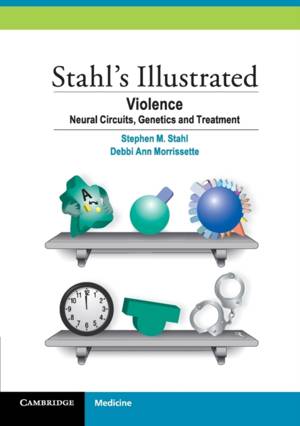
- Afhalen na 1 uur in een winkel met voorraad
- Gratis thuislevering in België vanaf € 30
- Ruim aanbod met 7 miljoen producten
- Afhalen na 1 uur in een winkel met voorraad
- Gratis thuislevering in België vanaf € 30
- Ruim aanbod met 7 miljoen producten
Zoeken
Stahl's Illustrated Violence
Neural Circuits, Genetics and Treatment
Stephen M Stahl, Debbi Ann Morrissette
€ 93,95
+ 187 punten
Omschrijving
Stahl's Illustrated Violence is a concise and highly illustrated guide to the underlying neurobiology, genetic predisposition and management of aggressive behaviours in patients with psychiatric disorders. All of the titles in the Stahl's Illustrated series are designed to be fun. Concepts are illustrated by full-color images that will be familiar to readers of Stahl's Essential Psychopharmacology, 4th edition, and The Prescriber's Guide. The visual learner will find that these books make psychopharmacology concepts easy to master, while the non-visual learner will enjoy a shortened text version of complex psychopharmacology concepts. Each chapter builds on previous ones, synthesizing information from basic biology and diagnostics to building treatment plans and dealing with complications and comorbidities. Novices may want to begin by looking through all the graphics and gaining a feel for the visual vocabulary. Readers more familiar with these topics should find that going back and forth between images and text provides an interaction with which to vividly conceptualize complex pharmacologies. Each book ends with a Suggested Reading section to help guide more in-depth learning about particular concepts.
Specificaties
Betrokkenen
- Auteur(s):
- Uitgeverij:
Inhoud
- Aantal bladzijden:
- 120
- Taal:
- Engels
- Reeks:
Eigenschappen
- Productcode (EAN):
- 9781107441606
- Verschijningsdatum:
- 15/05/2014
- Uitvoering:
- Paperback
- Formaat:
- Trade paperback (VS)
- Afmetingen:
- 145 mm x 206 mm
- Gewicht:
- 181 g

Alleen bij Standaard Boekhandel
+ 187 punten op je klantenkaart van Standaard Boekhandel
Beoordelingen
We publiceren alleen reviews die voldoen aan de voorwaarden voor reviews. Bekijk onze voorwaarden voor reviews.











